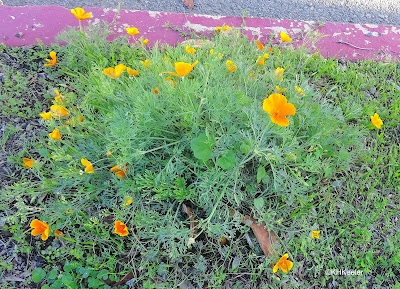 |
| California poppies, Eschscholzia californica, in a San Francisco lawn |
 |
| Southern Spain in October just before the rain started |
It is fun realizing that at one time, Rome ruled Europe, and its climate was the standard. People planted their crops in October, harvested in May. Charlemagne (768-814), Christian king of semi-Romanized people living in what is now France and Germany, strong-armed his subjects into planting crops in April. They resisted, because classical agricutural writing and Roman tradition told them to plant in October, even though that wasn't a good fit with the climate of central and northern Europe. (More on Charlemagne link, his month names).
That was a long time ago. In the US, spring and planting are in April-May, fall and harvest in September-October. Yet, in California, the growing season begins with the rain, in October.
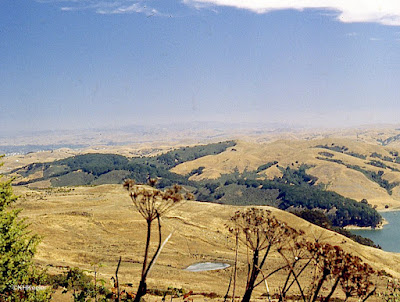 |
| Berkeley Hills, northern California, in June (old photo) |
I was back in San Francisco in early November 2021. The 2021 rainy season had started with heavy rain. The total rainfall in October and November was 8.44"; normal for those two months is 3.11". A climate where it doesn't rain for six months and breaks its drought with record rain is likely to flood, and California did. But, in addition to water damage and erosion, all that water recharged the soil, and plants everywhere burst into bloom.
Cities and parks water their plants. I can't say everything I saw was the result of Mediterranean-spring rains, but I am sure all that extra water encouraged flowering.
Simple things like hedges bloomed:
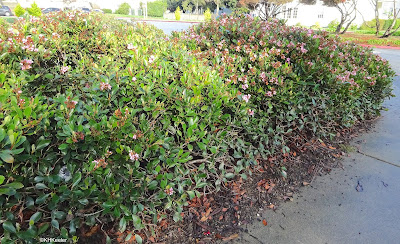 |
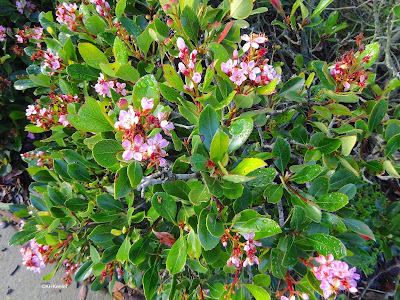 |
As did ornamental shrubs
Some flowering was dramatic:
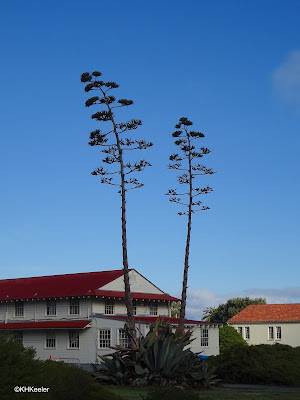 |
| flowering agaves That is how tall they were, it is not a funny camera angle. |
These agaves were probably 35 years old. Detecting abundant water, they committed to flowering, the one time in their lives that they flower. When the seeds are ripe, these plants will die.
This native sagebrush (Artemisia), shown below, was flowering. It was growing in a flower bed and, being wind-pollinated its flowers are not dramatic (yellow shoot).
 |
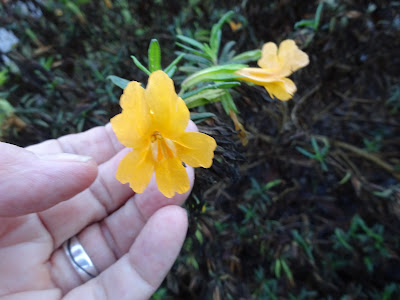 |
| monkey flower, Mimulus |
Beyond the planted vegetation, there was also a lot happening:
Seedlings had germinated in the cracks in the pavement:
 |
| Seedlings in the cracks in the pavement. The gray is sidewalk, the red is "no parking" curb. |
This California poppy, although a native wildflower, clearly counts as a weed in this corner of a lawn:
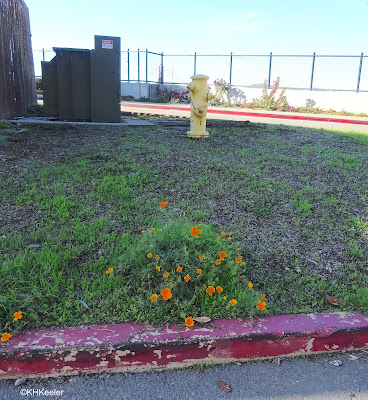 |
| California poppy as lawn weed |
Below, a closer look at the flowers in the photo above. They are not common dandelions, as you might think from the distance photo, although dandelions were flowering too.
 |
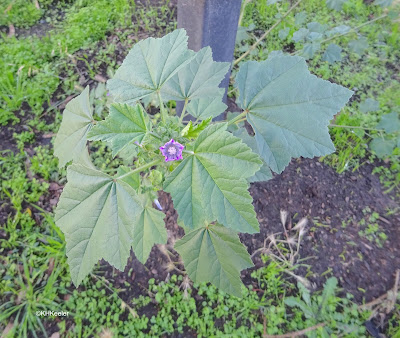 |
| a mallow, Malva species, flowering |
The causes of the flowering I saw are surely complex: some combination of seasonal or day-length cues, as well as the stimulus of (more than!) adequate water. Often, each plant species has conditions that initiate flowering that are not quite the same as the conditions for another species. But, unless people provide water, San Francisco plants have to have the winter rain to flower, whether or not they flower immediately or store the water for later.
My photos show you just a few of the plants I saw in flower. My husband had opposed a November trip because "rain is likely." Yes, we had a day of rain and one cloudy day, but we had three of bright cool sunshine. And the flowers were wonderful! I recommend San Francisco in November!
Comments and corrections welcome.
Kathy Keeler, A Wandering Botanist
More at awanderingbotanist.com
Join me on Facebook: https://www.facebook.com/AWanderingBotanist

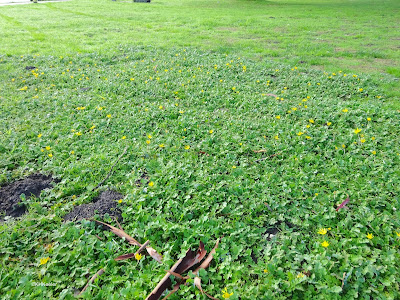
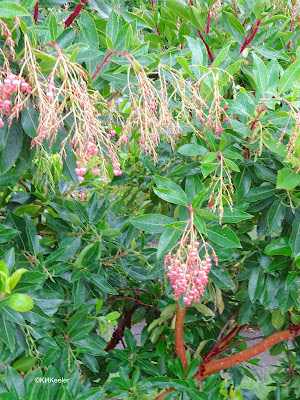
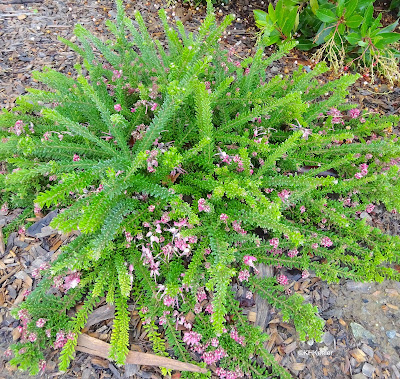
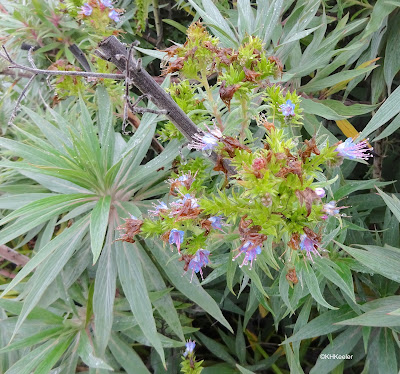
Thanks for sharing this informative blog. Must appreciate your efforts and work. Keep sharing this kind of good stuff.
ReplyDeletestudent accommodation vancouver
The artemisia is A. frigida, which has an interesting natural distribution, extending from near Canada's Arctic coast down to New Mexico. In the old world, it is also native to dry parts of northern China, Mongolia and Kazakhstan. I consider it a very beautiful silver foliage plant, and as an indicator of its adaptability, it thrives even in my garden, in subtropical, wet-summer Brisbane Australia, a garden it shares with Cocos nucifera, and a range of neotropical aroids and bromeliads.
ReplyDeleteI like the way you notice, photograph and comment on volunteers and weeds, in cracks in masonry or paving and the like, as well as garden plants and components of the native vegetation, wherever you go.